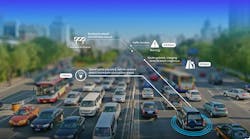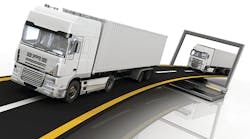For the past 30 years, South By Southwest (SXSW) has attracted people from all over the world to Austin, Texas, to meet, learn and share ideas, and since 1994, SXSW Interactive has focused on cutting-edge technologies and their potential to change and improve the world.
At the 2017 SXSW Conference, one of the main themes was how technology is going to reshape the future of transportation and mobility. In particular, there were three key areas that were brought up multiple times.
Smart Mobility
Self-driving cars are now frequently spotted in U.S. cities, and many cities and states are adopting programs to test how connected vehicles can be used to tackle a wide variety of problems. For example, Wyoming has begun a program to use connected vehicles to reduce the number and severity of weather-related highway accidents, and Tampa, Fla., is exploring ways for automated vehicles to reduce morning traffic congestion and improve safety for pedestrians and motorists.
In one of the most anticipated panels at SXSW, Bill Ford, executive chairman of Ford Motor Company, spoke about the ubiquity of autonomous cars and how they will reshape cities. A century after Bill’s great grandfather, Henry Ford created the Model T, the world’s first mass-produced automobile, and changed how cities and roads were developed, Bill Ford is focused on how autonomous cars will continue that trend.
He pointed to the trend of increasing urbanization and crowding in cities and called on the industry and government to rethink and reprioritize how smart mobility will empower billions of people and will become essential to remaining economically competitive.
Freight and Logistics Optimization
The role for connected vehicles isn’t constrained to just personal automobiles, and may have even larger consequences for freight and trucking operations around the world. Currently, over 85% of goods in the United States are transported on the back of a truck at some point, and there is limited visibility into that part of the supply chain because most trucking assets aren’t currently connected to the Internet.
Greg Price, CEO of OtterLogic, a local Austin technology startup, commented that the U.S. domestic freight industry wastes billions of dollars a year through inefficiencies that could be solved through creating an intelligent, real-time inventory of trucking capacity. The byproduct of this would be that not only would freight carriers find more loads, but the social and environmental costs from truck freight, which the Congressional Budget Office estimates at $129 billion a year, would be reduced through more efficient scheduling and routing.
With over 10 million trucks hauling freight across the U.S., the move to connected and autonomous trucking will take some time, but will be necessary for the U.S. to keep pace with other countries around the world, such as Germany, that are pushing ahead with advancing the industry. At an autonomous trucking event, Wolfgang Bernhard, head of Daimler’s global truck and bus division, commented, “Connected trucks will have a huge impact. They will transform transportation completely, and I promise, that when we look back in 10 years, we’ll recognize this was the turning point.”
Mapping and Imaging
The move to smart cars and trucks won’t happen in isolation, but instead will depend on several other keystone technologies, such as improved mapping and imaging software, to unlock their full potential. This technology hasn’t gone unnoticed, as Nokia recently sold its internal mapping unit, Here, to a consortium of automakers composed of BMW, Audi and Daimler.
The maps that Here creates are used by some of the world’s largest technology companies, such as Facebook, Amazon and Microsoft. Microsoft, for instance, uses Here to power Bing Maps and the maps on its mobile phones.
While the industry is still early, it is advancing rapidly, and the natural evolution of mapping and imaging technology is to eventually enable connected cars and trucks to navigate either cities or lumber yards with equal ease.
Jason Traff is a serial entrepreneur based in Austin, Texas. He’s a graduate of MIT who has started and exited several companies and now focuses on improving the freight shipping industry through software, while still guest lecturing at MIT and mentoring early-stage technology companies at the Capital Factory in downtown Austin. He's the co-founder of Otter Logic.





